F-18 Hornet
[Page 1]
F-18 models in 1/32 scale
Hasegawa and Academy : kit reviews & modelling reports
In 1/32 scale the first kit came in about 1985 from Hasegawa, but this represented a (Y)F-18 Hornet with a number of features later removed on production planes; this kit will be discussed and the kit will be converted into a F-18A.
(check out 1/72 kits here...)
Recently, Academy
from Korea came with a superb kit of the F/A-18C in 1/32 scale.
It is very good and is the best kit in this scale that I have seen so far,
very well detailed, accurate and a very full set of " stores" .
On the internet a lot of info can
be found on this kit, so I won't go into that detail here.
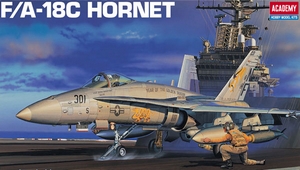
The kit has a number of options such
as:
- two ejection seats (probably for
a later issue of this kit as double seater F/A-18D)
- two styles of instrument panels
- two styles of exhausts
- two options for the main wheel
tyres
- lots, and lots of stores
- two styles of lower forward fuselage
grills and vents
- folded wing tips if desired
This gave me the idea to use these extra parts in the Hasegawa kit, making it into an F-18A. The best reference is ... the Academy kit with accurate patterns etc, supplemented with various books and again the net. .
The parts (more than 900...) and decals
of the Academy kit are seen here...
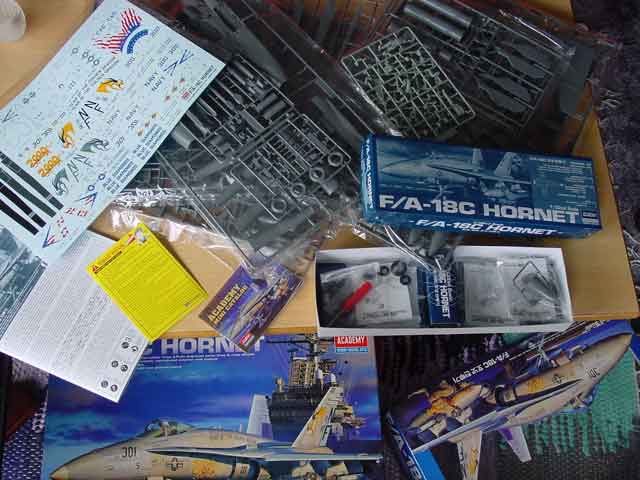
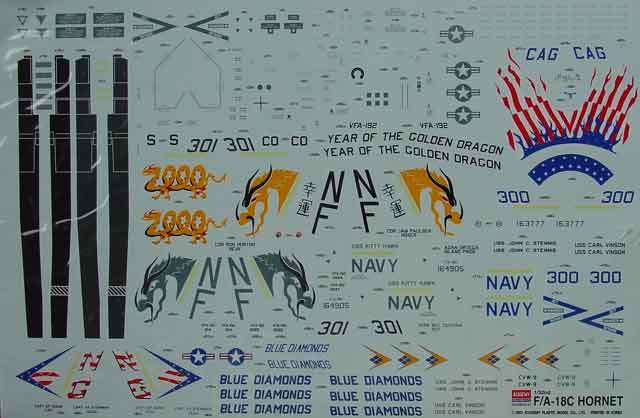
This report will show you how it
will be done....
The Hasegawa kit in this 1/32 scale has only about 100 parts which are quite nicely moulded.

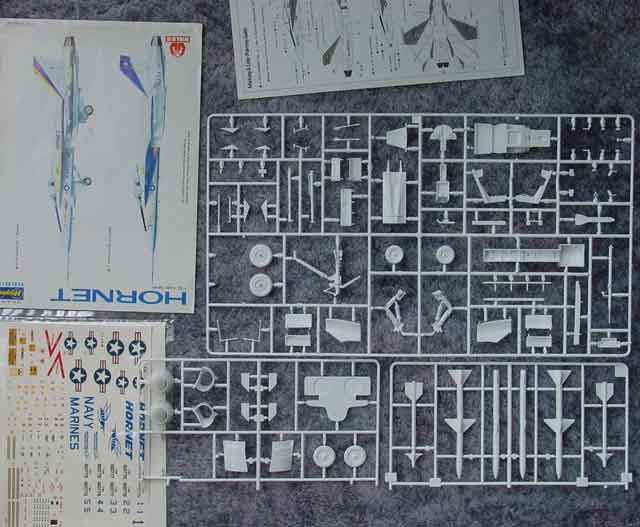
The Hasegawa kit represents a test/pre-production
plane, so for a current F-18A the following should be corrected/converted:
(A) the large airflow slots on the
cockpit sides should be closed
(B) the missile fairings on the lower
fuselage should be changed in shape
(C) the main wing leading edge saw
tooths should be removed
(D) the horizontal stabilizer leading
edge kinks should be filled to a straight edge
(E) convert small fairing on top
of the fins
(F) add gun fairing on top of the
nose
In addition this kit will benefit
from the following improvements:
(G) rescribe panellines with recessed
ones
(H) replace too large nose wheels
(I) add cockpit details with
replaced seat
(J) check instrument panel
(K) add intake tunnels to engine
fans
(L) detail the grills, vents etc
(M) correct flap hinge location /
panellines
(N) correct exhaust fairing on top
of fuselage/wing strake
(O) deepened main undercarriage bays
Other small updates will be covered
later on. The pitot test probe (part no. D19) is also not required.
The first steps...
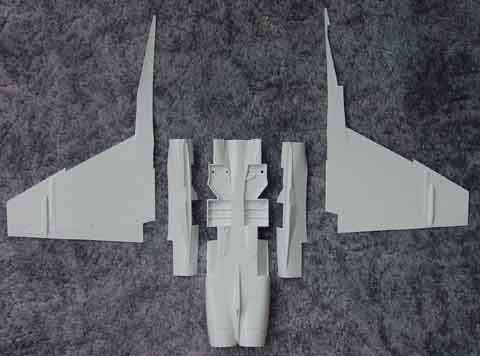
The main Hasegawa kit parts

The corrected missile fairing (B);
they should be shorter in length at the intake. The Academy kit shows how
it should be done.
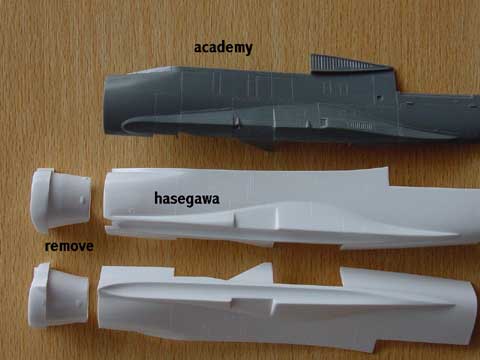
The main bays were deepened (O) by
removing the ceiling and adding strips and glueing them back in place.
Also the lower vent panels were opened .
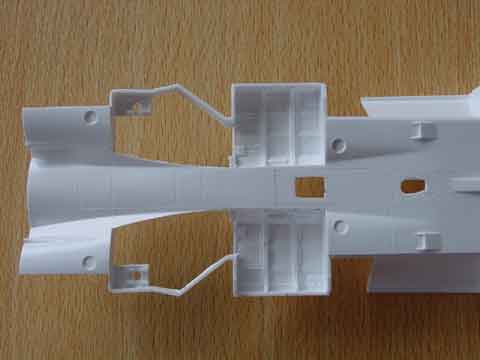
The grey
parts are from the Academy kit

The removed leading edge tooth (C)
and corrected exhaust fairing (N). Also the flap section was cut off, to
be glued to the fuselage parts.
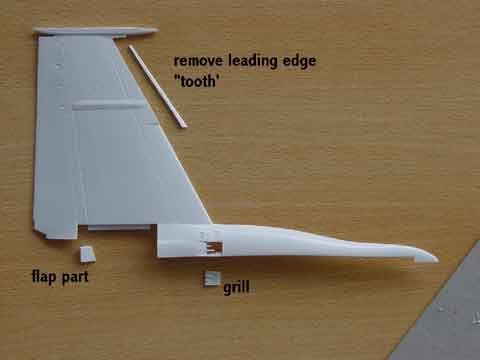
It was also decided to fold the Hasegawa
kit's wing tips, using the Academy kit parts for the hinges nrs G39/40
etc.);
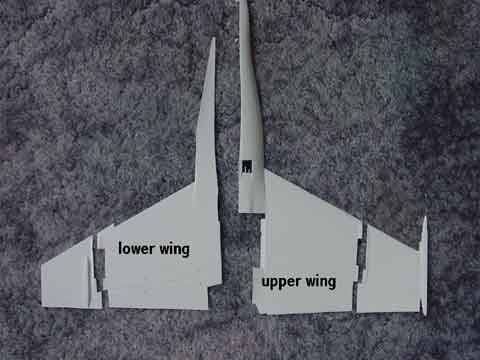
(L) The lower vents and grills at
the lower nose will be updated using the extra Academy kit part
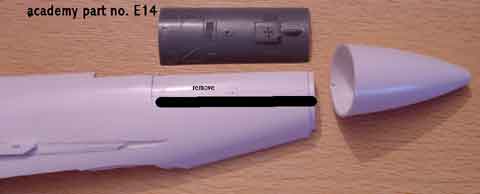
On to next
Page
[2]...
page 2
page 3
page 4

(c) Copyright "designer"/ All rights reserved. Your comments are welcomed by webmaster
Created September 1, 2003